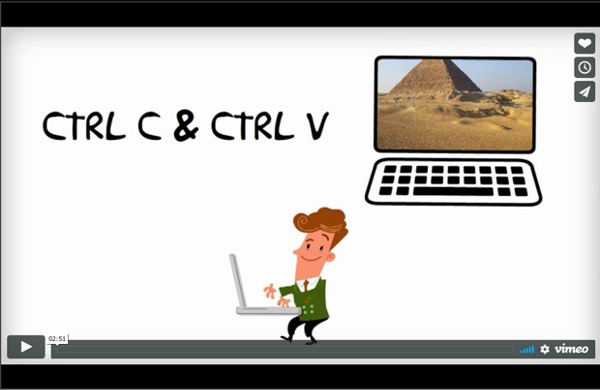



The Right Stuff: Teaching Kids About Copyright We (rightfully) spend significant time and energy teaching kids to be aware of their digital footprints. Stories abound about momentary lapses of judgment leading to loss of employment or scholarships. Students tend to embrace these lessons because they care about reputation. Obviously, we must continue these important lessons; however, we must realize that digital citizenship encompasses other online behavior, too. I’m talking about teaching kids about copyright. We should choose to teach copyright not because it is easy, but because it is hard, because the goal of understanding copyright will serve to measure the best of student energies, skills, and citizenship. It can be hard to get moral compasses to twitch when discussing the intricacies of copyright law, public domain, fair use, and Creative Commons. Teach Concepts Students need to understand the following concepts: copyright, public domain, fair use, and Creative Commons. Share Tools Model, Model, Model
Help Kids Become Responsible Digital Citizens | Education World EducationWorld is pleased to present this article by Christopher McGilvery, a lecturer at Angelo State University. The article originally appeared in TechEdge, a quarterly magazine published by Naylor LLC for Texas Computer Education Association members. To join or for more information, visit www.tcea.org. Today’s learners have the innate ability to easily navigate and use the Web. But educators need to think of ways to train today’s generation to be responsible and ethical life-long learners of the digital age. Take Care of Technology Equipment Students must take care of the technology equipment, which can be viewed as a privilege. Explore Appropriate and Safe Sites for Learning and Research The Internet is an immense storehouse of knowledge and should be used appropriately at all times. Copyright Law, Fair Use Act, and Creative Commons Matter Technology makes it easier to create, access, duplicate, and share information. Help Prevent Cyberbullying Self-image Is Important Think References
A dozen ways to teach ethical and safe technology use From the draft of my Survival Skills book: A dozen ways to teach and promote ethical and safe technology use Responsible teachers recognize that schools must give students the understandings and skills they need to stay safe not just in school, but outside of school where most Internet use by young people occurs. Over-filtered school networks set up a false sense of security; the real world of the Internet is quite different from the Internet at school. Teachers who address safe and ethical Internet use proactively: 1. 2. 3. 4. 5. 6. 7. 8. 9. 10. 11. 12. Will doing those things guarantee that a student will never get in trouble or danger online? Ethical instruction needs to be on going. * Johnson’s 3 P’s of Technology Ethics: Image source: